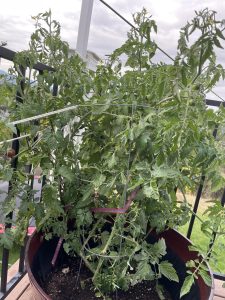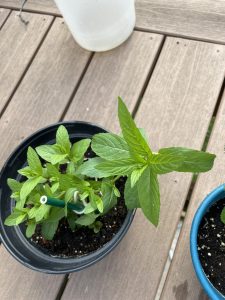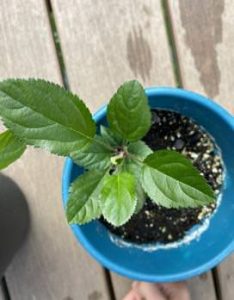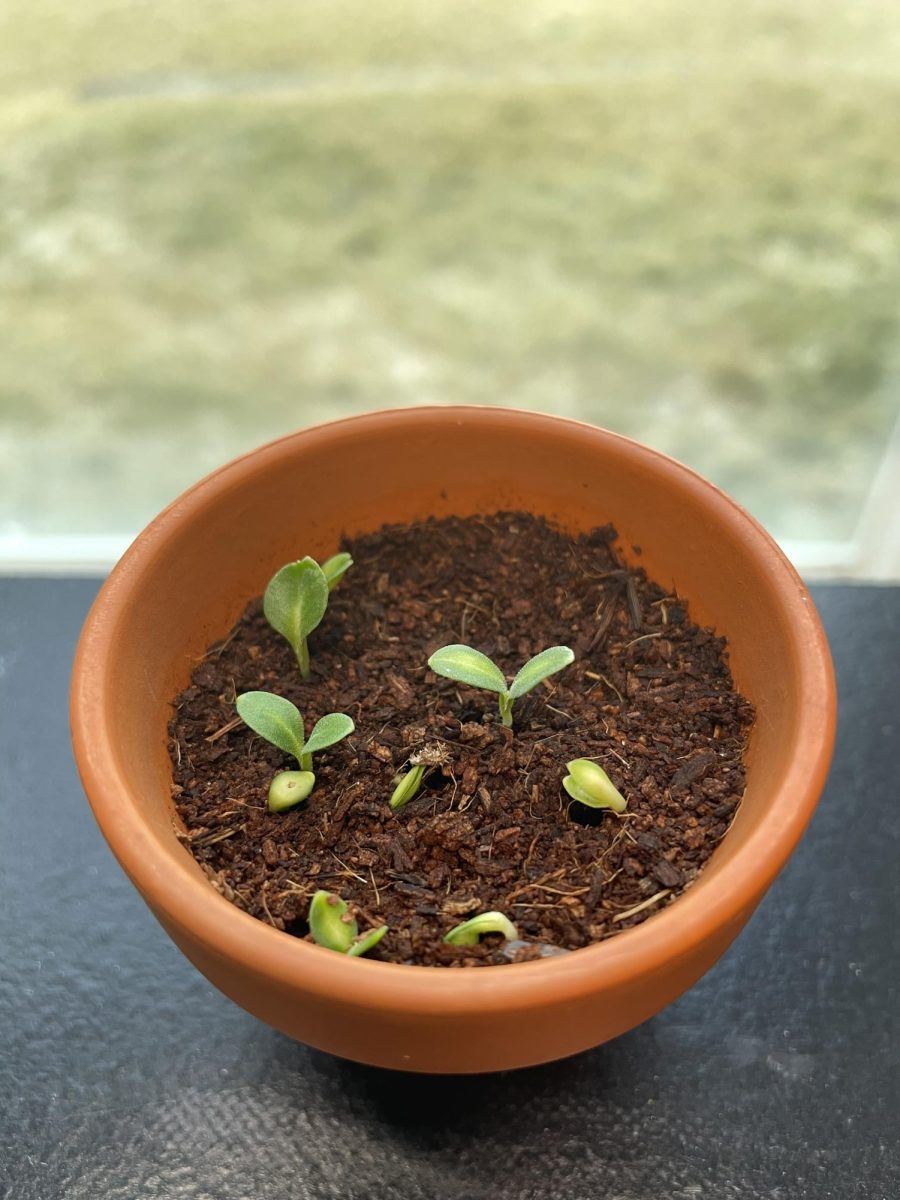It’s honestly bewildering to think that a rather insignificant-looking scrap – so commonly found on the forest floor, having been kicked around, swept aside, maybe even eaten and excreted out – is capable of becoming a beautiful spire of green complexity.
Plants demand our attention simply by existing. Which of us is capable of passing by an apple tree, its dewy red fruit on display, and not stopping to take a bite? Even if the branches of that tree just so happen to be out of reach, we are nevertheless compelled to study it from our distance, quickly noting in our minds which delicacy seems juiciest of the bunch. And to think it all came from a boring little seed…
Certainly, there is wonderful satisfaction in a plant’s aesthetic and sustenant uses, but the same can be said about the more mundane act of caring for them. The painstaking process of planting a seed, watering it, and watching the small thing grow in incremental amounts for months, actually isn’t as boring as it sounds. In fact, gardening (as it’s known) is considered a healthy hobby.
And don’t think for a second that gardening is a dying practice, either. It’s a favored hobby among a ‘growing’ number of people. According to a survey by Bonnie Plants, 2 in every 5 Americans grow their own vegetables or herbs. 30% of people who took part in the survey said that this would be their first time ever attempting to garden.
The survey was conducted during the COVID-19 pandemic, which is most likely responsible for the spike in gardening’s popularity seen around this time. Even after the pandemic, this hobby is seeing massive amounts of development. An article about gardening statistics and trends states that in 2022, “80% of American households participated in a gardening project”.
Although stereotyped for spending too much time scrunched up behind a screen, Gen Z and Millennials were planning to spend more on gardening in 2023 than any older generation.
As long as you don’t hate fresh produce and have some spare time and a few extra dollars, there are very few reasons why you shouldn’t start cultivating an army of photosynthesizing friends.
Here’s how you do it, based upon my own personal experience and multiple trustworthy online sources:
Choosing Your Plants
Where to find seeds: The best place to go for beginner gardeners to buy seeds is a local Walmart. The seeds are cheap and usually give a great crop.
Where to find plants: If you’re thinking about buying pre-grown plants instead of seeds (which is by no means a bad idea), then Lowe’s or your local plant nursery is a great place to start.
Be smart about what you buy: Obviously, you don’t want to go out and buy some exotic plant that only survives under certain, difficult to meet conditions – you want to choose plants that will grow well in your area. So I’m sorry, I’m afraid the answer is “no” if you were hoping to grow a pineapple in your backyard in Montana.
The Best Plants
- Great for salsa, burgers, tomato soup, and salads, tomatoes are a necessity of a beginner’s garden. This fruit is the very first I ever grew from seed, and is a large part of the reason why I’m into gardening today. And yes, a tomato IS a fruit!
- Find a good variety of tomato seeds such as cherry, beefsteak, or heirloom. My favorite place to buy seeds is Walmart because of the broad selection and low prices, which can range from $1.50 to $3.
- Sow seeds indoors in seed-starting mix or well drained soil, placing the seeds ¼ of an inch below the soil.
- Once seeds have been planted, keep them in a cozy spot, specifically one that’s around 75-80 degree F.
- Keep the dirt moist; I use a spray bottle to water mine.
- The seeds should sprout in about 5 days to 2 weeks.
- Once the final frost has passed (or when it’s consistently warm outside), and the tomatoes have been growing for about 6-8 weeks, plant them outside in your garden.
- Tomatoes LOVE the sun and will grow better if they get a lot of it, so plant them in a place that doesn’t get a whole lot of shade.
- FUN FACT: Ohio’s official state drink is tomato juice.
- I know, radishes aren’t everyone’s favorite, but they are really, really easy to grow, and if everything else in your garden fails, you’ll probably still get some of them.
- You’ll want to start growing these at the beginning or end of the summer, not when it’s too hot, as radishes like cooler temperatures.
- For starters, choose a regular round variety like the champion radish.
- Plant the seeds directly into your garden area once there is sufficient sunlight and no frost. It’s better to start these outdoors simply because it’s more of a hassle to do it inside.
- The seeds should germinate in 5-10 days.
- Radishes take about a month to fully mature, so be prepared to start yanking them out of the ground rather quickly.
- Yes, it’s that easy. Just make sure they don’t get too much shade or heat, and don’t plant them too close together because they dislike overcrowding.
- FUN FACT: Mexico has a festival dedicated to carving detailed sculptures into radishes.
- Potatoes are my favorite vegetable to grow. At the end of the growing season, after having waited for months, few activities are more fun than going buccaneering in the soil to find some of these round beauties. It’s like a treasure hunt…and you never know how many you’re going to get.
- Start by going to the grocery store and buying some potatoes. I like to look for ones that already have eyes growing on them, which will help speed up the process of growing them in your garden.
- Get an empty egg carton or some other tray-like object and place the potatoes with the biggest eyes inside of it (it’s okay if none have eyes – they’ll grow eventually). Place the tray of potatoes near a sunny window and let them stay there for 4-6 weeks before your last frost. This process is called ‘chitting’.
- When it’s warm, place potatoes outside in a moderately deep garden bed with well-drained soil. There are two main methods as to how deep to place them.
- 1st is planting them 2-3 inches deep into the ground, each about a foot apart.
- 2nd is placing them on the surface of the soil, and then putting a thick layer of straw over them. Still place them a foot apart. Water down the straw regularly and the potatoes will grow underneath it. Make sure that the straw layer isn’t too thin, and if it looks to be this way, go ahead and pile more straw on top.
- Using either method, the potatoes will be ready to harvest usually in the fall, when the plants start to turn yellow.
So there you have it, three super easy, basically guaranteed ways to start your garden.
My first year of gardening was a rough one because I completely winged it, rarely stopping to looking at a guide like this one. Even so, my garden went on to produce a modest yield despite my lack of skills, which proves it really isn’t all that difficult.
Here are some of my first-year results in case you need some encouragement…

This plant here is one of my first attempts at growing tomatoes. As you can see, It didn’t really want to cooperate so I strung it up. The plant ended up producing many tomatoes and it was overall a success, although not the prettiest sight to see.

This is a spearmint which I grew from a clipping. All I did was cut the top off of a nearby mint plant, which I then popped into a nearly-full water bottle. The severed end of the plant sprouted roots that grew in the water after a few weeks. After the roots became long enough, I transplanted it into some potting soil and it took off!

The final photo here is that of an apple tree sapling – at least I think. I never planted it, it just kind of showed up one day, so I can’t be absolutely certain as to what it is. My best hypothesis for its sudden appearance is that one of my brothers planted it without me knowing, hopeful that it might one day yield its fruits in our front yard. Sadly, it ended up dying because I forgot to take it inside when temperatures turned freezing.




